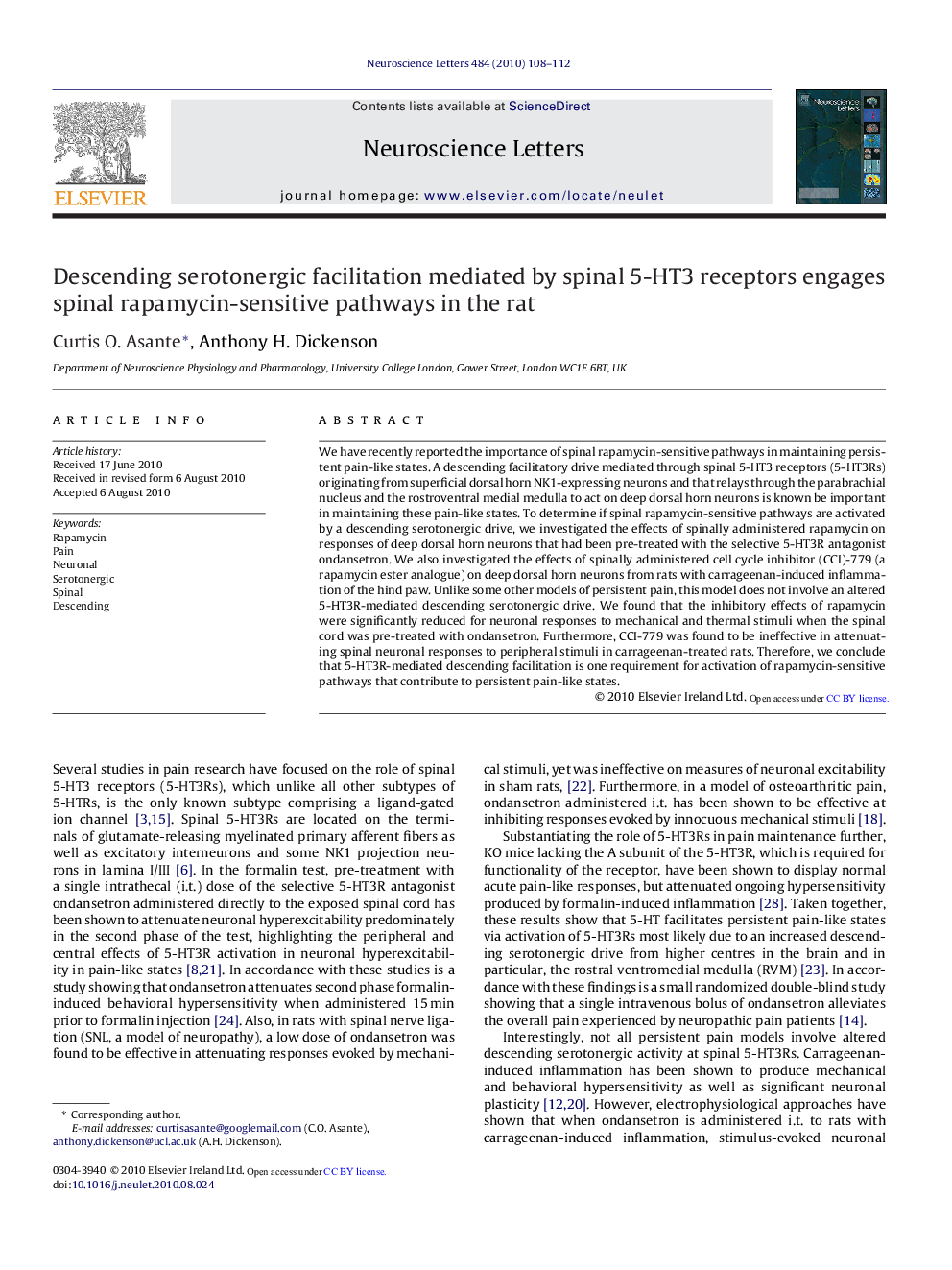| Article ID | Journal | Published Year | Pages | File Type |
|---|---|---|---|---|
| 6285230 | Neuroscience Letters | 2010 | 5 Pages |
We have recently reported the importance of spinal rapamycin-sensitive pathways in maintaining persistent pain-like states. A descending facilitatory drive mediated through spinal 5-HT3 receptors (5-HT3Rs) originating from superficial dorsal horn NK1-expressing neurons and that relays through the parabrachial nucleus and the rostroventral medial medulla to act on deep dorsal horn neurons is known be important in maintaining these pain-like states. To determine if spinal rapamycin-sensitive pathways are activated by a descending serotonergic drive, we investigated the effects of spinally administered rapamycin on responses of deep dorsal horn neurons that had been pre-treated with the selective 5-HT3R antagonist ondansetron. We also investigated the effects of spinally administered cell cycle inhibitor (CCI)-779 (a rapamycin ester analogue) on deep dorsal horn neurons from rats with carrageenan-induced inflammation of the hind paw. Unlike some other models of persistent pain, this model does not involve an altered 5-HT3R-mediated descending serotonergic drive. We found that the inhibitory effects of rapamycin were significantly reduced for neuronal responses to mechanical and thermal stimuli when the spinal cord was pre-treated with ondansetron. Furthermore, CCI-779 was found to be ineffective in attenuating spinal neuronal responses to peripheral stimuli in carrageenan-treated rats. Therefore, we conclude that 5-HT3R-mediated descending facilitation is one requirement for activation of rapamycin-sensitive pathways that contribute to persistent pain-like states.
